zur deutschen Version, Flagge klicken oder tippen

- Turkish Republic of Northern Cyprus
- presidial republic
- own name: Kuzey Kibris Türkiye Cumhuriyeti (KKTC)
• Flags
• Historical Flags
• Meaning/Origin of the Flag
• Coat of Arms
• Meaning/Origin of the Coat of Arms
• Map
• Numbers and Facts
• History
• Origin of the Country's Name

since 1984,
National flag,
ratio = 2:3,
Source, by: Flags of the World






since 1989,
Flag of the President,
ratio = 2:3,
Source, by: Flags of the World



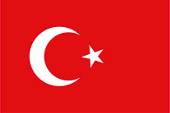
unofficial national flag,
ratio = 2:3,
Source, by: Flags of the World







1192–1268,
Flag of the Kingdom of Cyprus
Source, by: World Statesmen




1268–1393,
Flag of the Kingdom of Cyprus
Source, by: World Statesmen




1393–1489,
Flag of the Kingdom of Cyprus
Source, by: World Statesmen



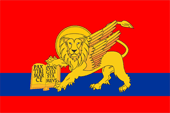
1489–1570,
Merchant flag of Venice
Source, by: Flags of the World



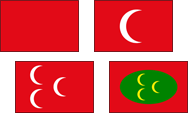
15th–18th century,
possible variants of the flag of the Ottoman Empire,
Source, by: Die Welt der Flaggen, Die Welt im bunten Flaggenbild
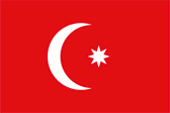
1840–1844,
Flag of the Ottoman Empire,
Source, by: Wikipedia (EN)




1844–1878,
Flag of the Ottoman Empire,
Source, by: Wikipedia (EN)



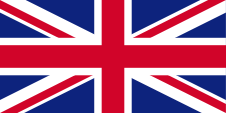
1878–1960, Union Flag → quasi National flag,
Flag of United Kingdom,
ratio = 1:2,
Source, by: Wikipedia (EN)






1881–1922,
Merchant flag,
ratio = 1:2,
Source, by: Flags of all Nations






1881–1922,
Flag of the government (state flag),
ratio = 1:2,
Source, by: Flags of the World




1881–1905,
Flag of the High Commissioner,
ratio = 1:2,
Source, by: Flags of the World




1905–1960,
Flag of the High Commissioner,
ratio = 1:2,
Source, by: Flags of the World




1922–1960,
Merchant flag,
ratio = 1:2,
Source, by: Flags of the World, Flaggenbuch 1939




1922–1960,
Flag of the government (state flag),
ratio = 1:2,
Source, by: Flags of the World, Flaggenbuch 1939




1960,
Flag of Cyprus,
ratio = 2:3,
Source, by: Flags of the World




1960–1963,
Flag of the Republic of Cyprus,
ratio = 2:3,
Source, by: Flags of the World






1975–1983,
Flag of the Turkish Federated State of Cyprus,
ratio = 2:3,
Source, by: World Statesmen






1983–1984, unofficial,
National flag,
ratio = 2:3,
Source, by: World Statesmen




2003,
Proposal of the UNO for a common flag,
ratio = 2:3,
Source, by: Wikipedia (EN)




Cyprus became a kingdom in 1192 under Guido of Lusignan as a fief of the King of Jerusalem. The flags and coats of arms of this period always showed the red lion of the House of Lusignan on eight white and blue stripes, later also the golden cross of the Kingdom of Jerusalem, supplemented still later by the heraldry of the respective heirs. In 1489, Caterina Cornaro, the widow of King James II., ceded her rights to the Republic of Venice, so that their flags were present here. In 1570, troops of the Ottoman Sultan Selim II. conquered the island, so that from that year onwards the flags of the Ottoman Empire flew over the island. In 1878, the Ottoman Empire ceded the island to United Kingdom in return for support in the Russo-Ottoman War (1877–1878). From this point onwards, individuals, citizens and also the authorities represented their status as citizens or organs of the British nation, embodied in the United Kingdom, through the use of the Union Jack, then called the "Union Flag". At sea, the British merchant flag, the Red Ensign, was intended for British citizens from 1864. In a few cases, the citizens of a colony were authorised by the Admiralty to use their own Red Ensign with the colony's badge at sea. Thus, from 1878 until independence in 1960, the Union Flag was the actual national and state flag on land.
United Kingdom introduced a flag system in 1864 in which:
• war ships fly the "White Ensign" (naval flag), a white flag often with an uninterrupted red St. George's-Cross and with the Union Jack in the upper staff quadrant of the flag,
• merchant ships fly a "Red Ensign" (also named "Civil Ensign" → civil flag, the real merchant flag), a red flag with the Union Jack in the upper staff quadrant of the flag, and
• governmental ships fly the "Blue Ensign" (flag for the use by the gouvernment → the actual state flag), a blue flag with the Union Jack in the upper staff quadrant of the flag.
From 1865, the ships of the colonial governments were allowed to use a Blue Ensign with a badge at the flying end. The respective governments were to provide appropriate badges. Merchant ships and seafaring privateers from colonies were only allowed to use a Red Ensign with a badge if the British Admiralty had issued a corresponding licence for that colony. Such a badge was often a regional landscape depiction on a disc, often showed ships, historical events or could simply be a kind of logo. Very often a badge also contained the name of the country or a motto. However, some possessions had a coat of arms from the beginning or were given their own coat of arms over the years and the badge was abolished. To ensure a largely uniform appearance in the flying end of the flags, coats of arms and other symbols were displayed on a white disc in the size of the former badges. However, there were also exceptions, as some colonies dispensed with this white disc and placed their coat of arms or even just the shield – sometimes enlarged – directly on the bunting. As early as the 1940s, the white disc was removed and the coat of arms was applied directly or enlarged. This conversion process took place gradually, nowhere simultaneously and completely. In some British possessions flags with the white disc are still in use today, in others no longer and in some areas both variants exist side by side.
From 1881, a British High Commissioner took over the reins of government. His badge was the three black letters C·H·C (Cyprus High Commissioner) on a white disc. In the same year, a "Blue Ensign" was introduced as a sea flag for the authorities. A "Blue Ensign" is a dark blue bunting with a flag representation – the British Union Jack – in the upper corner and the country's insignia/badge in the waving end of the flag, with the Union Jack indicating the links with United Kingdom. The badge was that of the High Commissioner. That was changed in 1905 and from that year onwards it showed two red leopards instead of the letters. This is the heraldry of the English King Richard the Lionheart, who conquered the island in 1191. The Union Flag was actually the national and state flag on land. Merchant ships and private seafarers from colonies may only fly a Red Ensign with badge if the British Admiralty has issued a corresponding licence for the colony. This was permitted for Cyprus from 1922. A "Red Ensign" is a red bunting with a representation of the flag – the British Union Jack – in the upper corner and the country's badge in the waving end of the flag. The Union Jack emphasises the links with United Kingdom. From 1922, the red leopards were also used on the "Blue Ensign", but not on a white disc.
On 19th of February in 1959, the Cyprus Treaty between United Kingdom, Greece and Turkey came into force and on 16th of August in 1960, United Kingdom granted independence to the "Republic of Cyprus", but the Territories of Akrotiri and Dhekelia remaining in British possession. A new flag had already been introduced on 6th of April in 1960. When designing this flag, Archbishop Makarios III. and the leader of the Turkish minority, Dr. Kücük, agreed that the heraldry of Cyprus should not contain any Greek or Turkish symbolism. Therefore, the flag shows a plain white bunting and on it a stylised orange (Pantone 716 C) map/outline of the island. It should actually be a light copper colour. Two crossed green olive branches appear underneath (Pantone 336 C). On the occasion of independence on 16th of August in 1960, the current model was officially adopted and the map is coloured completely orange. The copper colour is a reference to the copper deposits on the island, which have been known since ancient times and gave the island its name (Kyprion = Greek for copper). The colour white and the olive branches embody the ideal of peace and harmony. Almost immediately after independence, disputes broke out between the Turkish and Greek Cypriots. In 1963, the Turks withdrew from the joint administration of the island and established their own administration in 1967. In 1974, there was a coup in the "Republic of Cyprus" with the aim of annexing the island to Greece. As a result, Turkish troops marched in, fighting broke out and in 1975 the "Turkish Federated State of Cyprus" was founded. On 15th of November in 1983, the parliament of the Turkish Federated State proclaimed independence as the "Turkish Republic of Northern Cyprus". The flag of Northern Cyprus was adopted on 9th of March in 1984. It shows a single-coloured white bunting with two horizontal red stripes at the top and bottom, which are one tenth of the flag's height wide. In the centre are a crescent and a star. The national symbol of the Turks is the crescent and star, but white on red. Here in Cyprus, the colours were reversed, probably to identify the flag as "Cypriot", as the flag of Cyprus as a whole was also white. In practice, in addition to the flag of the Republic of Northern Cyprus, the flag of Turkey is very often shown, or only the flag of Turkey is used. After the secession of Northern Cyprus, the flag of the "Republic of Cyprus" was retained by the Greek-dominated Southern Cyprus. However, it is only used officially by offices and authorities. The population uses the flag of Greece.
Source:
Die Welt der Flaggen,
Flags of the World,
Wikipedia (EN),
Flaggen Wappen Hymnen,
Flaggen und Wappen der Welt,
Volker Preuß


since 2007,
Coat of arms of Northern Cyprus,
Source, by: Wikipedia (DE)

1984–2007,
Coat of arms of Northern Cyprus,
Source, by: Wikipedia (EN)

The current coat of arms was introduced on 27th of March in 2007. It goes back to the previously used model and shows an orange-coloured shield with a white dove flying upwards and holding an olive branch in its beak. Above the shield is the year 1983, and above that a crescent and star in white. The shield is framed by a wreath of olive branches. The dove is the symbol of peace and is intended to symbolise the Turkish Cypriots' desire for peace. The dove flies upwards, symbolising the young, aspiring state. The olive branches to the left and right of the coat of arms symbolise agriculture and prosperity. The crescent and star are symbols of the Turks, but also of Islam. The year 1983 refers to the year the republic was founded. The previously used coat of arms from 1983 had adopted the design of the coat of arms of the Republic of Cyprus and only added the year 1983 and the crescent and star above the shield.
Source: Wikipedia (DE), Volker Preuß

Location:
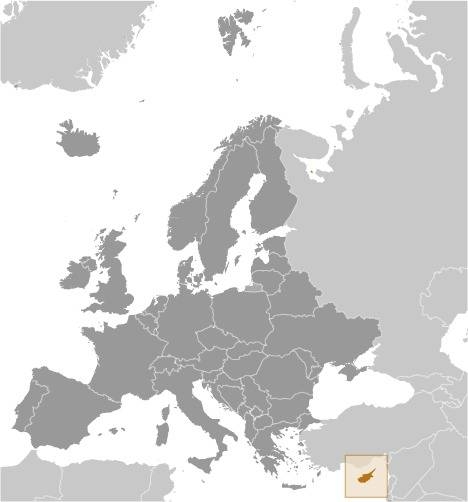
Source: CIA World Factbook
Map of the country:
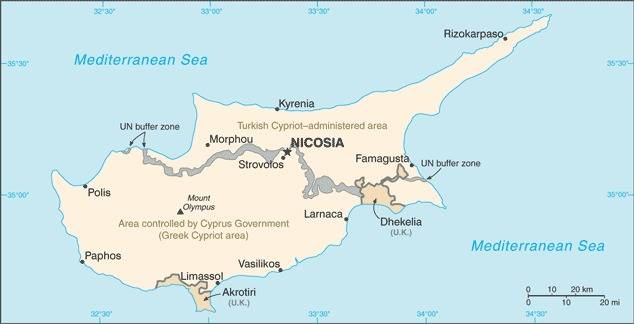
Source: CIA World Factbook

Area: 1.295 square miles
Inhabitants: 382.230 (2019), mostly Turks, a few Greeks
Density of Population: 295 inh./sq.mi.
Capital: North Nicosia, (Greek: Levkosía, Turkish: Lefkosa), 61.378 inh. (2011)
official Language: Turkish
other Languages: English, Greek
Currency: 1 Turkish Lira (TRY, TL) = 100 Kurus
Time Zone: GMT + 2 h
Source: Wikipedia (DE)

antiquity · colonization by Achaeans (Phrygians)
ca. 1000 B.C. · colonization by Phoenicians on the coast
715 B.C. · Cyprus comes to the Assyrian Empire
525 B.C. · Cyprus comes to the Persian Empire
333 B.C. · Cyprus is Greek (Alexander's Empire)
306 B.C. · Cyprus comes to the kingdom of Antigonus (Diadochi)
294 B.C. · Cyprus comes to the kingdom of Ptolemy (Diadochi)
58 B.C. · the Roman Empire conquers Cyprus
57 B.C. · Cyprus will be affiliated to the Roman province of Cilicia
31 B.C. · Cyprus is an own Roman province
4th century · introduction of Christianity
395 · at the partition of the Roman Empire Cyprus comes to the East Roman Empire (Byzantium)
from 349 · Arab invasions
969 · the island comes back to the Eastern Roman Empire (Byzantium)
1191 · the English King Richard the Lionheart, conquers the island during the Third Crusade
1192 · Cyprus becomes a kingdom as a fiefdom of the King of Jerusalem, Guy of Lusignan
1267 · extinction of the house of Lusignan, Hugh III., Son of Prince Henry of Antioch is King
1489 · Caterina Cornaro, widow of King James II, cedes her rights to the Republic of Venice
1570 · troops of the Ottoman Sultan Selim II. conquer the island, killing of 20.000 Christians, enslavement of 2.000 Christians
1573 · Venice sedes Cyprus officially to the Ottoman Empire, settlement of 30.000 Turks
1821 · participation of greek Cypriots in the freedom struggle of Greece against the Ottoman Empire
1832 · the Mameluke Mehemet Ali conquers Cyprus
1833 · Mehemet Ali is officially invested with the island by the Sultan
1838 · introduction of limited autonomy
1840 · the island comes back to the Ottoman Empire
1856 · extension of the limited autonomy
4th of June 1878 · the Ottoman Empire cedes Cyprus to United Kingdom against the pay of tributes
1881 · new constitution, rule of a British High Commissioner
5th of November 1914 · United Kingdom takes Cyprus officially in possession
1st of May 1925 · Cyprus becomes a British crown colony
1931 · anti-British uprising
1943 · anti-British uprising
1953–1955 · Cyprus Dispute between United Kingdom, Greece and Turkey
19th of February 1959 · Cyprus Treaty between United Kingdom, Greece and Turkey, Cyprus becomes not connected to Greece and can be independent, but must cede territories (Akrotiri and Dhekelia) to United Kingdom
16th of August 1960 · proclamation of independence
August 1963 · attempts by the leadership of Cyprus to reach cancelation of the Cyprus Treaty for full sovereignty and the withdrawal of foreign troops
December 1963 · revolt of Turkish militias
1964 · landing of UN troops, Turkey calls for separation of the Turkish settlements
7th of August 1964 · Turkish troops open the armed conflict in Cyprus
15th of July 1974 · invasion of Turkish troops
20th of July 1974 · proclamation of a federal Turkish state in northern Cyprus
15th of November 1983 · proclamation of the Turkish Republic of Northern Cyprus (recognized only by Turkey)
24th of April 2004 · the Greek Cypriots reject reunification
Source:
Atlas zur Geschichte,
Wikipedia (D),
World Statesmen,
Discovery '97,
Weltgeschichte,
Volker Preuß

The island owes its name to the rich copper deposits that were already famous in antiquity. The word "Cyprus" comes from the Greek word for copper, "Kyprion". In Greek, it is now called "Kypria", in Turkish "Kibris".
Source: Handbuch der geographischen Namen, Volker Preuß


![]()




































































